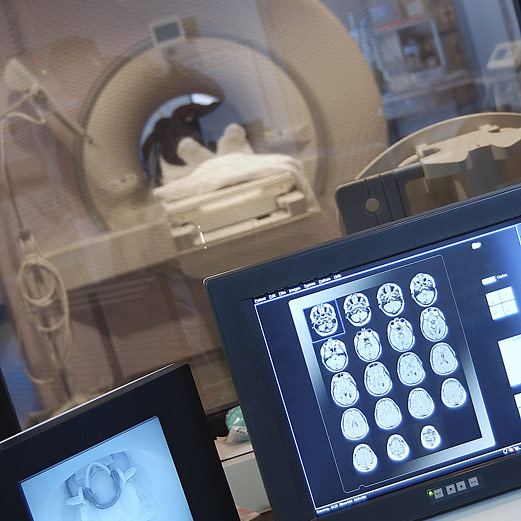
Here are some of the latest health and medical news developments, compiled by the editors of HealthDay:
FDA Announces New Science Research Effort
A network of academic regulatory science centers will be created to promote development of medical products and improve the U.S. Food and Drug Administration’s ability to regulate them, the agency announced Wednesday.
The move to strengthen the FDA’s role in science research comes after independent experts on the agency’s Science Board expressed concerns that the agency’s inability to keep up with scientific advances endangered lives, Bloomberg news reported.
The FDA’s budget for the fiscal year that began Oct. 1 includes $25 million for pilot studies conducted in partnership with industry, scientists and government agencies.
“There is no single discovery — no magic bullet — to address our unique set of modern scientific regulatory challenges,” said an FDA news release, Bloomberg reported. “But one thing is clear: if we are to solve the most-pressing public health problems we face today, we need new approaches, new collaborations and new ways to take advantage of 21st century technologies.”
—–
Ongoing Food Crises Affect 22 Nations: U.N. Report
About 166 million people in 22 countries are chronically hungry due to wars, natural disasters and poor government structure, according to a new report from the U.N.’s World Food Program and Food and Agriculture Operation.
The agencies said the proportion of people who are undernourished due to protracted food crises in those 22 nations — including Afghanistan, Haiti, Iraq, Somalia and Sudan — is nearly three times higher than in other developing countries, the Associated Press reported.
Anyone who regularly consumes less than 1,800 calories per day is considered undernourished, or “chronically hungry,” say U.N. officials. A country is considered to have a protracted food crisis if it reports a food crisis for at least eight years and receives more than 10 percent of its foreign assistance as humanitarian relief.
“Protracted crises can become a self-perpetuating vicious cycle,” according to the U.N. agencies, the AP reported. “Recovery may become progressively more difficult over time.”
—–
Drug Take-Back Program Huge Success: DEA
More than 121 tons of unused medicines were collected during the national prescription drug “Take-Back” day on Sept. 25, says the U.S. Drug Enforcement Administration.
The drugs that were collected at more than 4,000 sites across the country will be incinerated, the Associated Press reported.
“The Take-Back Campaign was a stunning nationwide success that cleaned out more than 121 tons of pills from America’s medicine cabinets, a crucial step toward reducing the epidemic of prescription drug abuse that is plaguing the nation,” DEA Acting Administrator Michele M. Leonhart said in a news release.
Many Americans have unused prescription drugs in their medicine cabinets but aren’t sure what to do with them. Some people flush their unused medicines down the toilet, which can lead to contamination of water supplies. Others toss their old medicines in the trash, where they can be found by drug-seeking criminals, the AP reported.
—–
Judge Approves $600 Million Settlement In Botox Marketing Case
A judge in Georgia has approved Botox maker Allergan Inc.’s decision to pay $600 million and plead guilty to misbranding the wrinkle-smoothing product in order to settle a federal investigation into misleading marketing.
On Tuesday, U.S. District Court Judge Orinda D. Evans sentenced California-based Allergan to pay $375 million in connection with the guilty plea. The company also agreed to pay $225 million in civil fines, the Associated Press reported.
A few weeks ago, Allergan announced it would plead guilty to a charge that its marketing strategies resulted in doctors using Botox for unapproved uses such as headaches, pain and cerebral palsy in children. Federal prosecutors began their investigation after being tipped off by two whistle blowers.
Allergan risked public safety by putting profits ahead of the federal drug approval process, according to U.S. Attorney Sally Qullian Yates, the AP reported.
“We hope other companies are paying close attention to what can happen if they don’t follow the rules and rush towards making profits,” she said.
—–
Nobel Prize Awarded For Chemical Tool Used In Cancer Research
Scientists who created a chemical method used in cancer research have been awarded the 2010 Nobel Prize in chemistry.
Richard Heck, a professor emeritus at the University of Delaware, and Japanese researchers Ei-ichi Negishi and Akira Suzuki developed palladium-catalyzed cross couplings in organic systems, the Associated Press reported.
This tool is one of the most sophisticated available to chemists today and is used worldwide in the commercial production of pharmaceuticals and molecules used to make electronics, said the Royal Swedish Academy of Sciences, which awards the Nobel prizes.
The academy said the tool was used to artificially produce cancer-killing substances first found in marine sponges. Clinical testing of the substances is underway, the AP reported.
—–
Teen Girls’ Obesity Surgery May Increase Birth Defects Risk: Study
Teen girls who’ve had obesity surgery may be at increased risk for having babies with spine and brain birth defects, says a new study.
Obesity surgery limits the amount of food a person can consume. This can lead to inadequate absorption of vitamin B9 (folic acid), which plays an important role in the prevention of spina bifida and other neural tube birth defects, explained Diana Farmer, chief of pediatric surgery at Benioff Children’s Hospital at the University of California, San Francisco, Bloomberg news reported.
While patients who undergo obesity surgery are placed on vitamin supplements, only about 14 percent of teen patients adhere to the supplement regimen, according to Farmer.
She said the “possibility of future birth defects may outweigh the benefit of this bariatric procedure,” for teen girls, Bloomberg reported.
The study was presented at a meeting of the American Association of Pediatrics.

